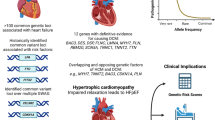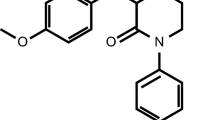Abstract
Wolfram syndrome (WS) is a recessively inherited disorder associated with recognised clinical features. Bleeding tendency was noticed in some of our patients, although this has not been reported before. We therefore studied this problem in all our WS patients and tried to postulate a possible pathogenesis. At the same time, a genetic linkage study provided evidence of locus heterogeneity of this syndrome and showed that the majority of our patients belong to the second WS locus identified in that study. Our study group consisted of 13 WS patients, belonging to WSF2 locus (group I). Controls consisted of 4 healthy siblings of WS patients (group II) and 7 diabetics who do not have WS (group III). Relevent clinical data were obtained, and a coagulation screen was carried out for all groups. All individuals in the three study groups have normal platelet count, thrombin time (TT), prothrombin time (PT), activated partial thromboplastin time (aPTT), clot retraction, Factor VIII activity (FVIIIc) and von Willebrand factor antigen (vWAg). Eleven of the WS patients have prolonged template bleeding time (BT) compared with both control groups. Patients with WS have a longer BT (mean 9.6 min, 95% CL 8.61–10.53 min) than the siblings group (mean 6.75 min, 95%CL 5.52–7.98 min) and the diabetic group (mean 5.49 min, 95%CL 4.56–6.42 min). The differences between the study group and controls are statistically significant, p=0.02 and 0.0002, respectively. In the three groups, platelet aggregation studies were normal using adenosine diphosphate (ADP), ristocetin and epinephrine. Aggregation with collagen was either absent or impaired, with failure of secondary wave being noticed in 11 of the WS patients (85%) and normal in the control groups. The pathogenesis of this problem is not known, but could be due to an inhibitory effect of vWAgII, deficiency of thrombospondin or a defect in the platelet membrane GPIa/IIa. Bleeding diathesis is a new additional feature to the clinical spectrum of WS, which is probably a feature of the disorder WFS2 and not WFS1, as bleeding has never been reported in the latter. This provides further evidence for the phenotypic and genotypic heterogeneity of this complex disorder and may provide clues to the search for the second gene responsible for this phenotype.
Similar content being viewed by others
Author information
Authors and Affiliations
Additional information
Received: 10 April 2000 / Accepted: 11 October 2000
Rights and permissions
About this article
Cite this article
Al-Sheyyab, M., Jarrah, N., Younis, E. et al. Bleeding tendency in Wolfram syndrome: a newly identified feature with phenotype genotype correlation. Eur J Pediatr 160, 243–246 (2001). https://doi.org/10.1007/s004310000704
Issue Date:
DOI: https://doi.org/10.1007/s004310000704




